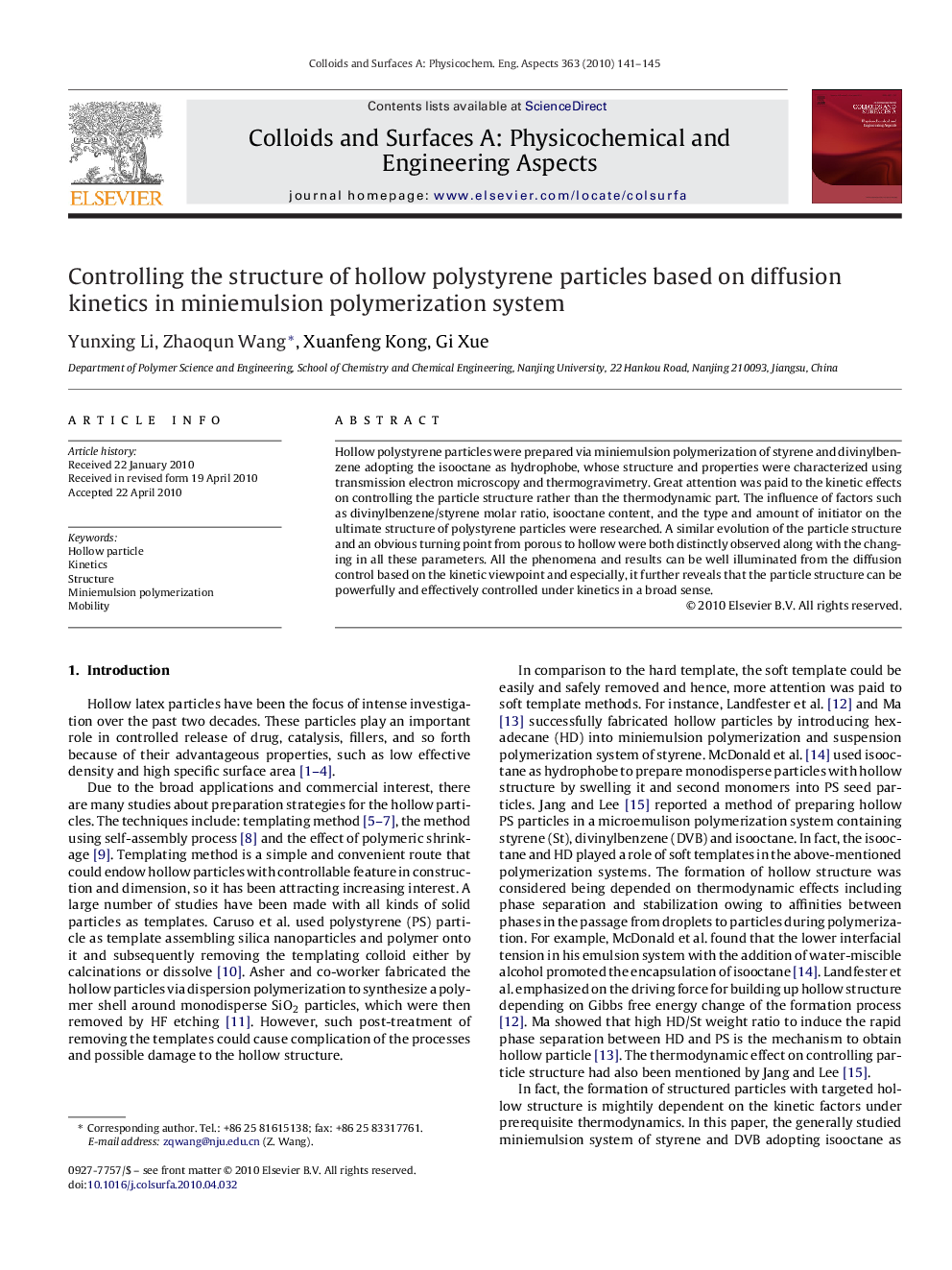| Article ID | Journal | Published Year | Pages | File Type |
|---|---|---|---|---|
| 595382 | Colloids and Surfaces A: Physicochemical and Engineering Aspects | 2010 | 5 Pages |
Hollow polystyrene particles were prepared via miniemulsion polymerization of styrene and divinylbenzene adopting the isooctane as hydrophobe, whose structure and properties were characterized using transmission electron microscopy and thermogravimetry. Great attention was paid to the kinetic effects on controlling the particle structure rather than the thermodynamic part. The influence of factors such as divinylbenzene/styrene molar ratio, isooctane content, and the type and amount of initiator on the ultimate structure of polystyrene particles were researched. A similar evolution of the particle structure and an obvious turning point from porous to hollow were both distinctly observed along with the changing in all these parameters. All the phenomena and results can be well illuminated from the diffusion control based on the kinetic viewpoint and especially, it further reveals that the particle structure can be powerfully and effectively controlled under kinetics in a broad sense.
Graphical abstractFigure optionsDownload full-size imageDownload as PowerPoint slide
